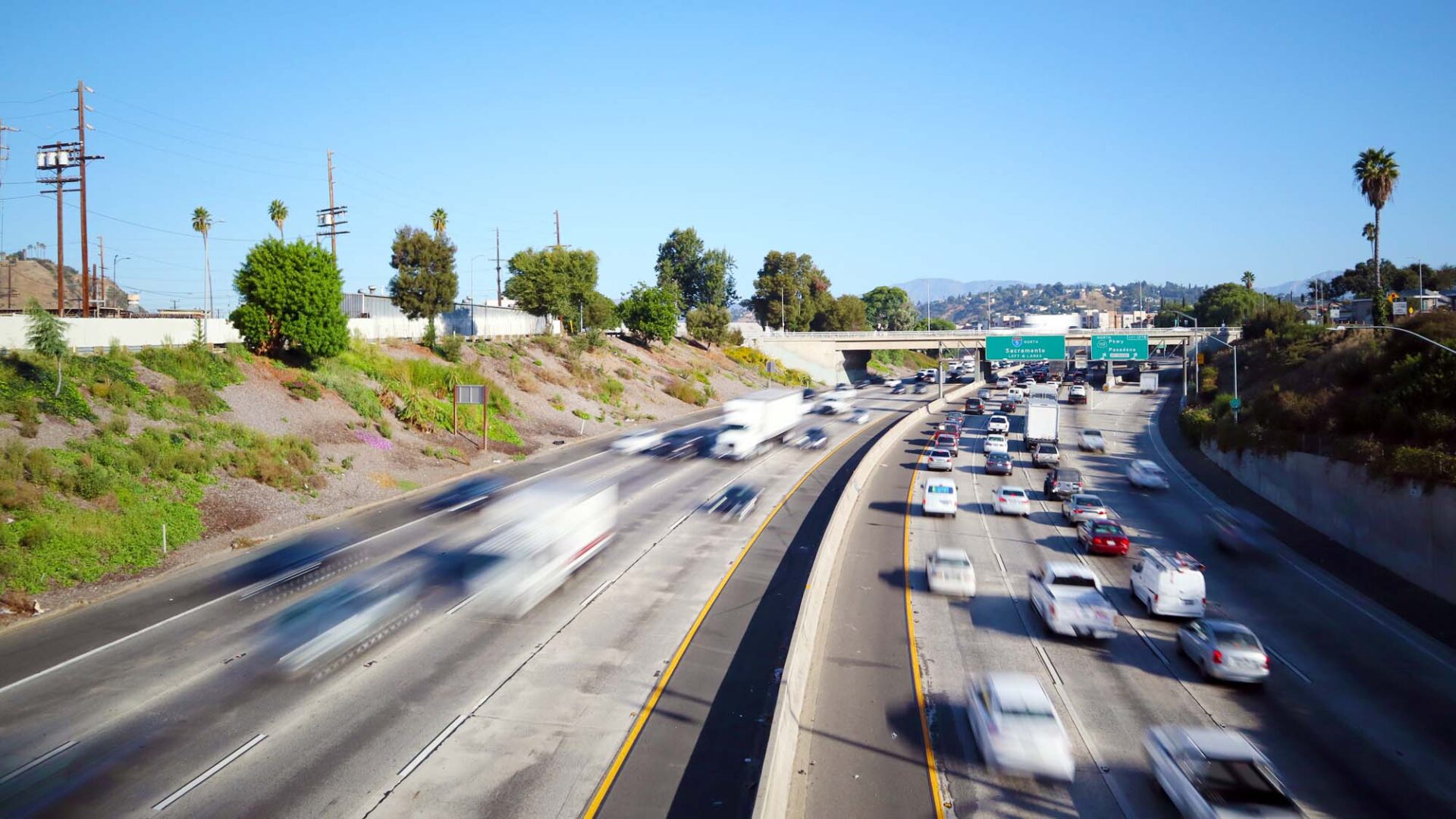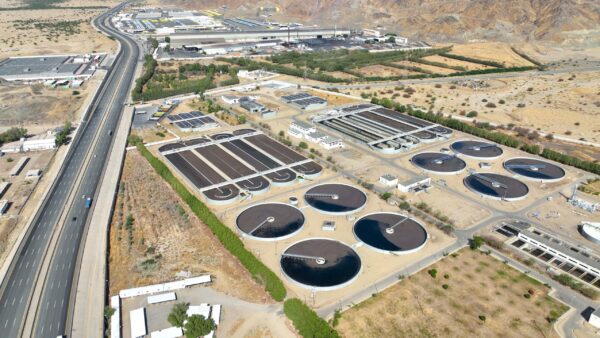

The Los Angeles County Metropolitan Transportation Authority’s (Metro) I-5 North County Enhancement Project (I-5 NCEP) is an ambitious undertaking that will ease congestion, improve safety, and accommodate booming growth along the 14-mile corridor between State Route 14 in Santa Clarita and Parker Road in Castaic. Specifics of I-5 NCEP include:
Addition of one HOV lane in each direction along I-5 between the SR14 and the Parker Road Interchange
Given the volume of traffic along the project corridor and the vital connection the highway provides to residents and businesses in the North County region, Metro created a unique approach to manage the project successfully. Metro selected a construction services support team led by Hill International, Inc. Hill has established a local field office for Metro that houses a team of about 50 consultants, Metro employees, and Caltrans oversight staff who work as an integrated project team. Mobilization was a challenging task during COVID-19 due to required health protocols and supply chain challenges. The field office is fully operational 24 hours per day, 7 days per week to align with the construction schedule, including substantial night shift work.
Support in the Field, On the Street, and in the Office
Hill Team leader and Senior Construction Engineer David Tiberi PE, CCM, PMP, DBIA, explained how the Hill Team provides Metro with the construction services support they need to monitor and control the work, both in the office and in the field.
The Hill team is also working closely with Metro to keep the public informed about upcoming construction work. “Metro is leading the project’s outreach efforts,” Tiberi said. “But our staff conducts community meetings, issues construction alerts, and has also given presentations to local elected officials at various public meetings. They are in constant contact with local officials to keep them up to date on the most recent project activities.”
Another feature of the Hill team is the establishment of a Caltrans certified testing lab within the project field office “There is no operating material testing lab specializing in highway construction within 40 miles of our project, so we need our own lab to sample and test concrete, asphalt, aggregates, and perform batch plant inspection to keep pace with construction,” Tiberi said. “Our subconsultant, S2 Engineering, has set up a lab and received Caltrans certification. Our project lab will enable our team to provide material testing turn-around times needed to keep up with the work.”
One of the most important tasks the Hill Team is responsible for is developing and maintaining the project-specific Construction Manual. The Manual stipulates how the project team operates, and blends Metro contracting standards with Caltrans construction standards. Sorting out these standards is key, both for avoiding conflicts and omissions and making certain that Caltrans will accept the completed work. “Before Hill started on the project, Metro developed the construction plans and specifications to blend the agency’s contract administration requirements with Caltrans’ construction standards,” said Tiberi. “And as you can imagine, blending contract documents must be done carefully. Our development of the Construction Manual is the extension of Metro’s prior work into the construction phase an ensures that our staff operate consistently with Metro’s intended project approach.”
The Manual documents team decisions regarding operating procedures, provides instructions for on-boarding new team members, assigns responsibilities to team members for deliverables, and provides reminders of the schedule for submittal of the deliverables to Metro. It covers Communications, Document and Project Controls, Field Office requirements, Emergency Response and Communications, Construction Inspection, Survey Oversight, and a host of other topics. Tiberi explained that the manual is maintained by a standing committee that incorporates team input throughout the course of the project so that it incorporates lessons learned and best practices as the project evolves. “This is a living document,” he said. “And it will grow and reflect the realities of the project as we proceed and could potentially serve as a reference to Metro for future projects.”
Internal team communication is a considerable challenge for a team operating around the clock on a major highway project. For this reason, Hill Team inspectors are all using computer tablets to access all project records electronically from the field and to remain in constant contact with management at the field office. The I-5 NCEP plan set has more than 3,000 pages that are continuously updated and distributed electronically so that inspectors have the latest updated documents at their fingertips on the tablets, as well as approved submittals, concrete mix designs, requests for information (RFIs), and other critical information. Hill Team inspectors are using some of the industry’s best construction productivity applications for functions such as daily reports and emergency communications.
Several key lessons learned emerged from Metro’s previous I-405 Sepulveda Pass Improvements Project (also known as the “Carmageddon” Project, completed about 8 years ago). Tiberi said Metro has carefully studied that project and applied their lessons learned to the I-5 NCEP: “Our project is intended to provide Metro with a new model for its highway program as it returns to the Design-Bid-Build delivery method. We are building upon lessons learned and starting with a collaborative spirit with our partners at Caltrans District 7. Future highway projects may be more similar to our I-5 NCEP, so Metro may borrow from our Manual for its future highway projects so that other consultants don’t need to reinvent the wheel.”
Enhancing Highway Projects
The I-5 NCEP project broke ground in December 2021, and substantial completion is currently slated for late summer of 2026. “Metro has long-term plans to make traveling throughout the region safer, faster, easier, and more sustainable,” said Tiberi. “The I-5 NCEP is hardly the first Metro project to embody those principles, but it’s one of Metro’s biggest highway projects today.
“The creation of our project field office, the support of key roles, and the team’s focus on contract and change management really show that Metro is committed to the success of this project for the long-term. Our team will leverage our experience and expertise to make sure Metro has the processes and information it needs to make that happen.”

Hill Vice President David Tiberi has 35
years of construction management
and project delivery experience for
infrastructure projects, specializing in
transportation, highways, and bridge
projects across California. He is a
former Caltrans District 7 construction
employee, and brings firsthand
knowledge of construction standards for
Caltrans, Metro, American Association
of State Highway and Transportation
Officials (AASHTO), Federal Highway
Administration (FHWA), and local
California agencies.
Share

June 23, 2025 | Articles
Jeffrey Hurley Joins Hill’s Northern California Rail Practice

June 23, 2025 | Articles
Ready, Set, Grow: First VP Chad Koelling Takes Charge of Hill’s Mountain West Region

June 8, 2025 | Articles
PMO in Saudi Arabia: The Holistic Approach to Realizing a National Mega-Portfolio

June 1, 2025 | Articles

May 26, 2025 | Articles

May 12, 2025 | Articles
Keeping Your Water/Wastewater Programs Flowing with Public Relations

April 27, 2025 | Articles
Oiling the Machine: Steps to Successful Permitting on Infrastructure Megaprojects

April 20, 2025 | Articles
Sustainable Scaling: Solutions for Managing Risk on Europe’s Data Center Projects